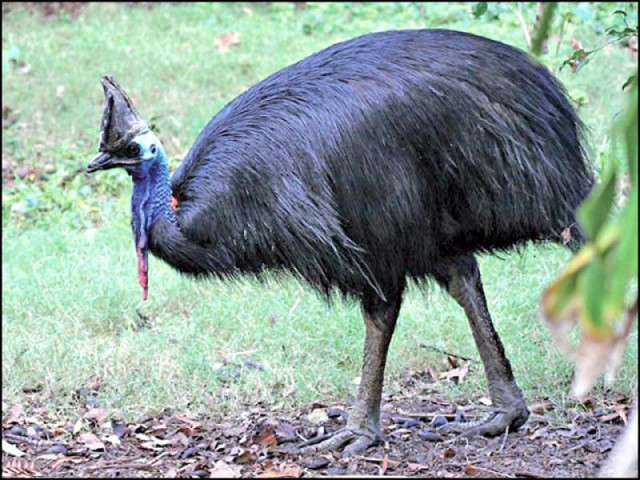Fifty-seven lonely years and counting
Brought to Pakistan in 1971, Lahore Zoo’s only cassowary has spent a life without a female partner

PHOTO: FILE
Speaking to The Express Tribune, Lahore Zoo Director Chaudhry Shafqat Ali said there are many rare breeds of animals and birds in the zoo but cassowary is one of its kind. Sadly, however, the zoo could not manage to bring a partner for the bird.
“Despite being lonely, the bird has managed to live for almost six decades here at the zoo,” he said.
Skinny wolves, sick bear: Pakistan officials wrangle over zoo
According to the zoo administration, cassowary belongs to the ostrich family. They are large and are flightless birds with bristly feathers. They are native to the tropical forests of south-east Asia and Australia.
“They are attractive looking birds, with a blue face, two red wattles (flaps of skin) hanging from their neck and a hollow, helmet-like structure atop their heads,” a zoo official said. “Despite their looks, however, they are extremely aggressive birds. If they feel threatened, they can inflict fatal injuries with the help of their dagger-like claws.”
The facility’s Veterinary Officer Dr Rizwan Khan said that cassowary is the oldest and weakest resident of the Lahore Zoo. According to its records, the bird was brought to the zoo from England on October 22, 1971, when it was about six years old.
“Our cassowary is now almost 57 years old. It is the oldest resident of the zoo and is the only one in Pakistan,” he said. He added that a cassowary has a life expectancy of about 40 years, but this unique and rare bird at the Lahore Zoo has seen fifty-five springs.
Corruption plaguing import of exotic creatures for zoo
“It is also interesting to note that the female lays her eggs and moves to another place, while the male incubates the young and raises them,” Dr Rizwan said. “A cassowary can tear the chest of its ‘enemy’ if it feels threatened with one powerful kick, therefore, maintaining suitable distance is necessary.”
He said that unlike its cousins – ostriches and emus – cassowaries do not show a friendly attitude toward humans and they often attack zookeepers. Every year, cassowary attacks claim the lives of various animals across the globe, while many others sustain injuries.
The doctor added that the animal is well-taken care of at the zoo. It is fed roasted grams, fruits, millet, corn and barley. “At the Lahore Zoo, there is a Jamun tree in cassowary’s cage, from which it eats the fallen fruits with gusto,” he said. “Most of its time, however, is spent in a room built inside the cage and it rarely goes out because it is a solitary animal,” The Zoo’s Education Officer, Karan Saleem said.
Lahore Zoo’s elephant cage destined to remain empty
“Despite the administration’s continuous efforts, the zoo could not bring a female for the cassowary. We contacted many countries, including the United States, the United Kingdom, and Malaysia in this regard, but they could not get it from anywhere,” Saleem revealed.
“One of the main reasons for the unavailability of cassowaries is that they are very rare and have no tendency to be farmed like ostriches or emus.”
Published in The Express Tribune, May 16th, 2020.



















COMMENTS
Comments are moderated and generally will be posted if they are on-topic and not abusive.
For more information, please see our Comments FAQ